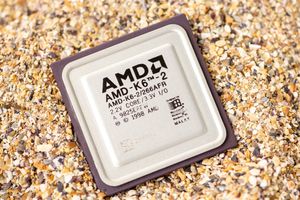
Electronics retailer Best Buy (NYSE: BBY) fell short of the market’s revenue expectations in Q1 CY2025, with sales flat year on year at $8.77 billion. Its non-GAAP EPS of $1.15 per share was 5% above analysts’ consensus estimates.
Is now the time to buy BBY? Find out in our full research report (it’s free).
Best Buy (BBY) Q1 CY2025 Highlights:
- Revenue: $8.77 billion (flat year on year)
- Adjusted EPS: $1.15 vs analyst estimates of $1.09 (5% beat)
- Adjusted Operating Income: $333 million vs analyst estimates of $303.1 million (3.8% margin, 9.9% beat)
- Management lowered its full-year Adjusted EPS guidance to $6.23 at the midpoint, a 2.7% decrease
- Operating Margin: 2.5%, down from 3.5% in the same quarter last year
- Locations: 1,107.8 at quarter end, down from 1,117 in the same quarter last year
- Same-Store Sales were flat year on year (-6.1% in the same quarter last year)
- Market Capitalization: $15.14 billion
StockStory’s Take
Best Buy’s first quarter results were shaped by mixed category performance and continued shifts in consumer behavior. CEO Corie Barry described how growth in computing, mobile phones, and tablets was offset by ongoing softness in home theater, appliances, and drones. Online sales remained a bright spot, with nearly 32% of domestic revenue coming from digital channels and delivery times continuing to improve. Management acknowledged that customers are highly value-focused and remain attracted to predictable sales moments, with Barry noting, “customers continued to be deal-focused and attracted to more predictable sales moments.” Operational execution, inventory management, and digital investments played key roles in stabilizing results, despite a cautious consumer environment.
Looking ahead, Best Buy’s outlook is shaped by ongoing tariff uncertainty and changing consumer technology needs. Management lowered full-year adjusted EPS guidance and cited continued inflation and tariff dynamics as primary headwinds. Barry emphasized that “there is still uncertainty related to tariff levels, timing, and countries involved in addition to the potential actions of others in the industry.” The company is focused on mitigating tariff impacts through vendor partnerships, manufacturing flexibility, and assortment adjustments. Management expects growth in computing and gaming categories, driven by technology upgrades and product launches, while also investing in marketplace initiatives and retail media to diversify profit streams. These strategies are intended to position Best Buy for long-term resilience amid market challenges.
Key Insights from Management’s Remarks
Management attributed first quarter performance to category mix shifts, digital engagement improvements, and evolving supply chain strategies in response to the current tariff environment.
- Growth in computing and tablets: Strong customer demand for computing and tablet products drove comparable sales growth in these categories, supported by upgrade cycles and interest in AI-enabled devices. Barry noted positive momentum tied to end-of-life support for Windows 10 and new product innovations.
- Omnichannel and digital expansion: Online sales grew year-over-year for the second consecutive quarter, with faster delivery times and a higher mix of sales through digital channels. Management highlighted improvements in search and app experiences as key contributors to digital engagement.
- Tariff mitigation strategies: The company has reduced its reliance on China as a sourcing region, now representing about 30–35% of product costs, compared to 55% earlier in the year. Efforts include leveraging vendor manufacturing flexibility, negotiating costs, diversifying sourcing, and adjusting assortment to lessen the impact of tariffs on both costs and prices.
- Marketplace and retail media initiatives: Best Buy is preparing for a mid-year launch of its third-party marketplace, having already exceeded its annual seller onboarding target. The Best Buy Ads business expanded digital ad inventory and partnerships, including new offerings with Meta, aiming to drive incremental profitability through both traffic and new advertisers.
- Operational efficiencies and cost control: Investments in supply chain technology, AI-driven customer care, and procurement optimization have resulted in cost savings and improved customer satisfaction. CFO Matt Bilunas pointed to a favorable indirect tax settlement and disciplined expense management as drivers of better-than-expected profitability.
Drivers of Future Performance
Best Buy’s near-term outlook is influenced by tariff pressures, consumer demand uncertainty, and the scaling of new digital profit streams.
- Tariff and supply chain risk: Management highlighted that ongoing trade policy negotiations and varying tariff levels could impact both product costs and consumer pricing throughout the year. The company is actively working with vendors to mitigate these impacts, but acknowledged that cost increases may flow through to customers in select categories.
- Marketplace and advertising growth: The upcoming U.S. marketplace launch and expansion of the retail media business are expected to benefit gross profit rates, especially in the second half of the year. Management believes marketplace contributions will help offset category margin pressures, while new ad partnerships are set to broaden revenue sources.
- Category innovation and upgrade cycles: Best Buy expects continued growth in computing and mobile phones, supported by replacement cycles (such as end-of-life for Windows 10 and Mac upgrades), new gaming launches, and increased interest in AI-enabled and wearable products. Management sees these trends as key drivers for comp sales improvement, particularly as the year progresses.
Catalysts in Upcoming Quarters
In the coming quarters, the StockStory team will be watching (1) how effectively Best Buy navigates further tariff changes and adjusts sourcing strategies, (2) the impact of the U.S. marketplace launch and expanded retail media offerings on gross profitability, and (3) category trends in computing, gaming, and wearables as upgrade cycles and product launches unfold. Progress in cost containment and operational efficiency initiatives will also be important to monitor.
Best Buy currently trades at a forward P/E ratio of 10.7×. Should you double down or take your chips? The answer lies in our full research report (it’s free).
Stocks That Trumped Tariffs
Donald Trump’s victory in the 2024 U.S. Presidential Election sent major indices to all-time highs, but stocks have retraced as investors debate the health of the economy and the potential impact of tariffs.
While this leaves much uncertainty around 2025, a few companies are poised for long-term gains regardless of the political or macroeconomic climate, like our Top 5 Strong Momentum Stocks for this week. This is a curated list of our High Quality stocks that have generated a market-beating return of 183% over the last five years (as of March 31st 2025).
Stocks that made our list in 2020 include now familiar names such as Nvidia (+1,545% between March 2020 and March 2025) as well as under-the-radar businesses like the once-small-cap company Exlservice (+354% five-year return). Find your next big winner with StockStory today.





